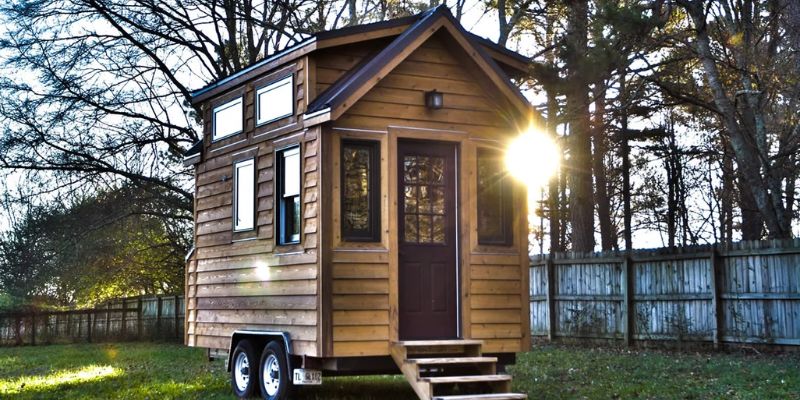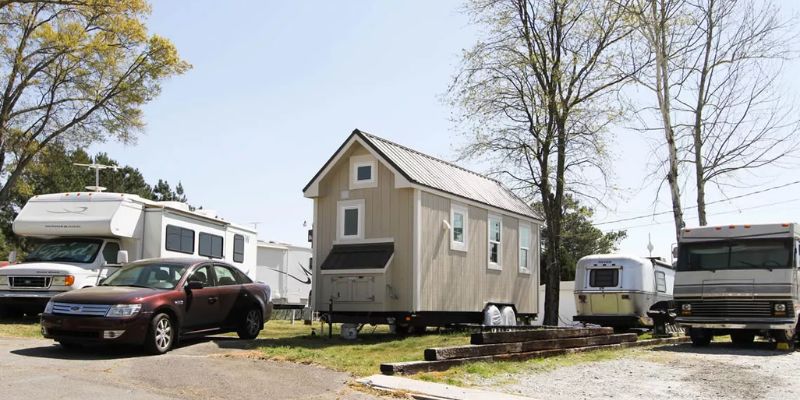Are you curious about tiny houses? Have you ever wondered what a tiny house is and why people choose to live in one? Wonder no more. We'll explore the concept of a tiny house, its various features, and associated lifestyle benefits. Join us as we take an in-depth look into the world of mini-living - from how much they cost to where to move them.
Whether you're interested in downsizing or purchasing your tiny home, this information will be invaluable for your decision-making process. So come along with us as we focus on these burgeoning homes that offer so much potential for those looking to save money and anyone who shares their vision of sustainable living.
What is a Tiny House, and Just How Tiny Is It?

A tiny house is a type of dwelling that has become increasingly popular in recent years. Generally speaking, tiny houses are any fully functional home that measures less than 500 square feet. That translates to about the size of an average bedroom or small studio apartment - much smaller than the typical American home, which clocks in at over 2,000 square feet.
In addition to being incredibly compact and efficient, tiny homes have various amenities and features designed to maximize living space. These include fold-out beds, convertible furniture to loft areas for extra storage or sleeping quarters, and multi-purpose kitchenettes.
Because they can be made out of many different materials, such as wood, steel, or even recycled containers, tiny homes offer many options when it comes to customization.
In addition to their size, tiny houses are mobile and designed for easy transport.
This makes them ideal for those who want the freedom to move around without sacrificing their home comforts. Whether you're looking for a temporary living solution or something permanent, tiny homes could be the answer you've been searching for.
What is the Tiny House Movement?

The tiny house movement is a lifestyle choice gaining momentum in recent years and seeks to redefine traditional housing and living standards. Its main focus is providing homeowners an efficient, affordable, low-impact alternative to the standard home. Whether you're looking to downsize or want to live more simply, the tiny house movement provides many solutions for sustainable living.
At its core, this style of living emphasizes minimalism and simplicity while preserving maximum mobility. The movement aims to create a self-sustaining lifestyle without placing too much of a burden on our planet's resources.
Why People Are Going Tiny
For many, a tiny house is attractive as it offers several advantages over traditional housing. For starters, the smaller size means fewer resources are used - translating to lower energy bills and more money in your pocket. In addition, with such little space comes less clutter and mess to manage. This creates a haven of peace and enhances focus on the important things in life.
Owning a tiny home also allows the owner to live off-grid if desired - temporarily or permanently. This opens the possibility of living anywhere without being tied down by costly utility bills or long-term leases.
Benefits of Living in Tiny Houses
Living in a tiny house has several advantages over traditional housing solutions.
Lower cost of living
The most obvious benefit of tiny houses is their affordability. Generally speaking, they cost much less than traditional homes, and this may include the price of transportation if you opt for a mobile home.
Less energy consumption
Smaller houses use fewer resources, contributing to a lower carbon footprint and a more sustainable lifestyle.
Living off-grid capability
Tiny homes are often designed with off-grid living capabilities. This means no electricity or water bills, making them ideal for those looking to escape the high costs of living in urban areas or take advantage of being in nature.
Easier maintenance and cleaning
Being smaller does have its advantages - especially when it comes to keeping your home clean and tidy. With less space to worry about, maintenance tasks can be completed in a fraction of the time.
Simplicity and minimalism
Tiny houses encourage simplicity and minimalism through their small size. This makes prioritizing important things easier while avoiding excess clutter and mess.
Flexibility of location
Since many tiny homes are built on trailers or wheels, they can easily be transported around. This allows you to take your house with you if you decide to move - or explore different locations at any time.
Customizability
Since tiny homes come in all shapes and sizes, there is plenty of room for customization regarding design and layout. Adding lofts and storage compartments using different materials can make your tiny home unique.
Community connection
The tiny house movement has gained momentum recently, with many communities embracing the lifestyle choice. This makes it easier for those interested in tiny living to connect with like-minded individuals who can provide advice or resources for their journey.
Environmental conservation
Living small contributes to environmental preservation by reducing reliance on natural resources such as electricity and water. This Environmental conservation helps reduce the strain on Earth's finite resources while preserving its beauty and diversity.
Freedom from debt
For many, owning a traditional home often comes with costly mortgages that take decades to pay off. With a tiny home, however, homeowners can avoid this debt and live more comfortably with fewer financial burdens.
Living in a tiny house is an attractive option for those seeking a simpler, more sustainable lifestyle. Their affordability, mobility, and low-impact living have become increasingly popular in recent years as part of the tiny house movement.
Whether you're looking to downsize or escape high living costs, tiny houses are what you need to achieve your goals. They offer freedom from debt, easier maintenance tasks, and the opportunity for environmental conservation - all while reflecting your personality and enhancing your quality of life.
How much does a tiny house cost?
The cost of a tiny house depends on various factors, including the size and materials used in construction. Tiny houses built on wheels can cost between $10,000 and $50,000, while those built on foundations may be nearer to the cost of traditional homes.
That said, many people choose to build their own tiny homes, which can result in significant savings depending on the skills and resources available. Other costs, such as utilities such as electricity and water, should also be factored into budget considerations.
FAQS
Is living in a tiny house legal?
Whether or not a tiny house is legally permitted will depend largely on local zoning laws and building codes. In some cases, it may be possible for you to live in your home permanently, while in others, it may only be allowed temporarily. It’s always best to research your area's regulations before committing to building a tiny house.
What size is considered 'tiny' for a house?
This size can vary, but a tiny house is usually 500 square feet maximum. Some people even downsize further and live in homes as small as 100 square feet.
What are tiny houses called?
They are sometimes called 'tiny homes,' 'micro-homes,' or simply 'small houses.' They are also part of the tiny house movement, a lifestyle choice to reduce environmental impact and live debt-free.
Conclusion
Tiny houses offer an interesting and exciting living alternative allowing a smaller footprint on the earth and greater freedom to roam. They break down major items of traditional homes into small, manageable parts that can fit almost anywhere. Many people find them appealing because of their efficiency, affordability, and sustainability. By understanding what a tiny house is, one can make an informed decision as to whether or not this is the right fit for them.




